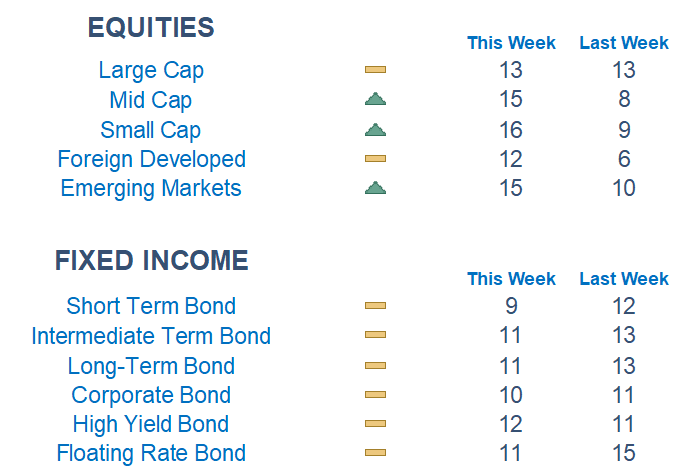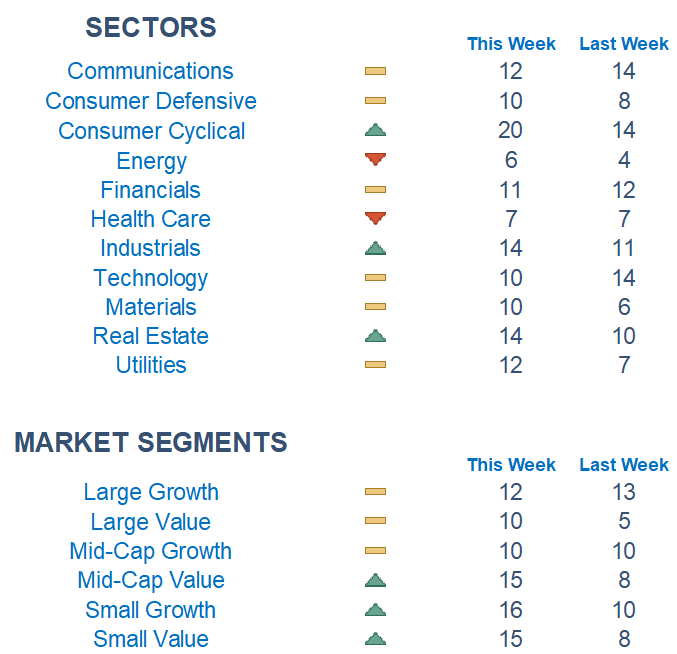Our model readings are finally seeing a rotation of strength in other areas of the market. This comes after mega-cap growth names dominated index returns over the last couple of months.

This Week on Wall Street - Week of June 12th
Market Commentary
Our model readings are finally seeing a rotation of strength in other areas of the market. This comes after mega-cap growth names dominated index returns over the last couple of months. The S&P 500 is now firmly above the 4,200 level as this strength broadens out.
Investors will be preparing for a potential pause on Wednesday after 10 straight rate hikes out of the Federal Reserve. We also get another reading on inflation on Tuesday. Estimates are for a drop to 4% YoY, down from 4.9%.
Among sectors, we are seeing some change of pace. Discretionary, Industrials, and Real Estate are at the top. Energy and Health Care are underperforming according to our model. Picking names with relative strength within most sectors has remained the dominant and most effective strategy.

What is Newton?
Our Newton model attempts to determine the highest probability of future price direction by using advanced algorithmic and high-order mathematical techniques on the current market environment to identify trends in underlying security prices. The Newton model scores securities over multiple time periods on a scale of 0-20 with 0 being the worst and 20 being the best possible score. Trend & level both matter.

Economic Releases This Week
Monday: None
Tuesday: NFIB Optimism Index, Consumer Price Index
Wednesday: Producer Price Index, Fed Decision Day
Thursday: Initial & Continuing Jobless Claims, US Retail Sales, Philadelphia Fed Manufacturing Survey
Friday: Consumer Sentiment

Technical trading models are mathematically driven based upon historical data and trends of domestic and foreign market trading activity, including various industry and sector trading statistics within such markets. Technical trading models, through mathematical algorithms, attempt to identify when markets are likely to increase or decrease and identify appropriate entry and exit points. The primary risk of technical trading models is that historical trends and past performance cannot predict future trends and there is no assurance that the mathematical algorithms employed are designed properly, updated with new data, and can accurately predict future market, industry and sector performance.
